
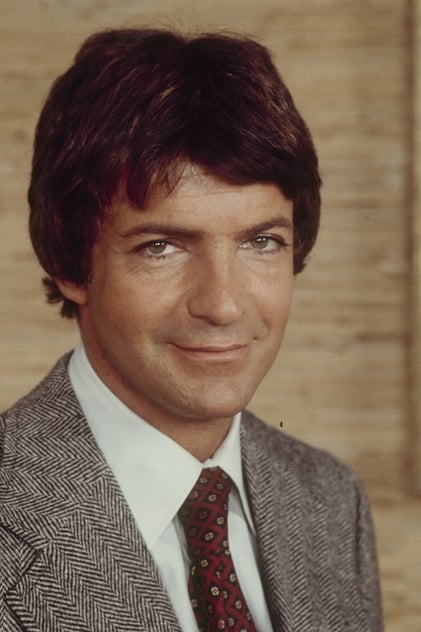
Robert Drivas
Born: November 21, 1938
Died: June 29, 1986
in Chicago, Illinois, U.S.
Died: June 29, 1986
in Chicago, Illinois, U.S.
From Wikipedia, the free encyclopedia.
Robert Drivas (November 21, 1938 – June 29, 1986) was an American actor and theatre director.
Drivas was born Robert Choromokos in Chicago, Illinois, the son of Hariklia (née Cunningham-Wright) and James Peter Choromokos. Drivas studied at the University of Chicago and the University of Miami. After further training at the Greek Playhouse in Athens, Greece and with the Coconut Grove Playhouse in Miami Beach, he made his New York City debut in the role of Rameses in 1958 in the play The Firstborn, starring Anthony Quayle as Moses. He continued to perform on stage with One More River (1960), The Wall (1960), The Irregular Verb to Love (1963), and And Things That Go Bump in the Night (1965), which he also directed. In 1963 he won a Theatre World Award for his performance in Mrs. Dally Has a Lover (opposite Estelle Parsons).
Drivas was associated with many well-known theatrical figures of his time. These included playwrights Terrence McNally, whose play The Ritz he directed in 1975, and Edward Albee, who directed Drivas in the 1983 premiere of Albee's harshly received play The Man Who Had Three Arms. Other directing credits include Bad Habits, for which he won an Obie Award, Legend, Cheaters, It Had to Be You, a revival of the musical Little Me, and Peg, a musical biography of songstress Peggy Lee, with lyrics and book by the star herself.
Concurrent with his theater work, Drivas appeared in television, beginning in 1958, on such crime shows and dramas as Route 66, N.Y.P.D., The Defenders, The Fugitive, 12 O-Clock High (TV series), and The F.B.I..
Drivas' first theatrical film appearance was in the role of "Loudmouth Steve" in the classic prison drama Cool Hand Luke (1967). This debut led to more film work, in The Illustrated Man (1969) and Where It's At (1969).
Description above from the Wikipedia article Robert Drivas, licensed under CC-BY-SA, full list of contributors on Wikipedia.
Robert Drivas (November 21, 1938 – June 29, 1986) was an American actor and theatre director.
Drivas was born Robert Choromokos in Chicago, Illinois, the son of Hariklia (née Cunningham-Wright) and James Peter Choromokos. Drivas studied at the University of Chicago and the University of Miami. After further training at the Greek Playhouse in Athens, Greece and with the Coconut Grove Playhouse in Miami Beach, he made his New York City debut in the role of Rameses in 1958 in the play The Firstborn, starring Anthony Quayle as Moses. He continued to perform on stage with One More River (1960), The Wall (1960), The Irregular Verb to Love (1963), and And Things That Go Bump in the Night (1965), which he also directed. In 1963 he won a Theatre World Award for his performance in Mrs. Dally Has a Lover (opposite Estelle Parsons).
Drivas was associated with many well-known theatrical figures of his time. These included playwrights Terrence McNally, whose play The Ritz he directed in 1975, and Edward Albee, who directed Drivas in the 1983 premiere of Albee's harshly received play The Man Who Had Three Arms. Other directing credits include Bad Habits, for which he won an Obie Award, Legend, Cheaters, It Had to Be You, a revival of the musical Little Me, and Peg, a musical biography of songstress Peggy Lee, with lyrics and book by the star herself.
Concurrent with his theater work, Drivas appeared in television, beginning in 1958, on such crime shows and dramas as Route 66, N.Y.P.D., The Defenders, The Fugitive, 12 O-Clock High (TV series), and The F.B.I..
Drivas' first theatrical film appearance was in the role of "Loudmouth Steve" in the classic prison drama Cool Hand Luke (1967). This debut led to more film work, in The Illustrated Man (1969) and Where It's At (1969).
Description above from the Wikipedia article Robert Drivas, licensed under CC-BY-SA, full list of contributors on Wikipedia.
Movies for Robert Drivas...
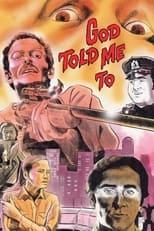
Title: God Told Me To
Character: David Morten
Released: October 22, 1976
Type: Movie
A repressed Catholic NYPD detective uncovers a netherworld of deranged faith, alien insemination and his own unholy connection to a homicidal messiah with a perverse plan for the soul of mankind.

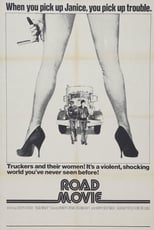
Title: Road Movie
Character: Gil
Released: February 3, 1974
Type: Movie
Gil and Hank are two independent truckers who run into problems when they are forced to pay off traffic managers to get loads. They also have to pay off highway cops when their rigs are overweight and bank loans but consider themselves lucky just to be able to keep up the interest payments. Add to that a small, frizzy-wigged highway hooker named Janice, who tempts them with her lurid charms.


Title: The Streets of San Francisco
Released: September 23, 1972
Type: TV
Two police officers, the older Lt. Stone and the young upstart Inspector Keller, investigate murders and other serious crimes in San Francisco. Stone would become a second father to Keller as he learned the rigors and procedures of detective work.


Title: Cannon
Released: September 14, 1971
Type: TV
Cannon is a CBS detective television series produced by Quinn Martin which aired from March 26, 1971 to March 3, 1976. The primary protagonist is the title character, private detective Frank Cannon, played by William Conrad. He also appeared on two episodes of Barnaby Jones.
Cannon is the first Quinn Martin-produced series to be aired on a network other than ABC. A "revival" television film, The Return of Frank Cannon, was aired on November 1, 1980. In total, there were 124 episodes.

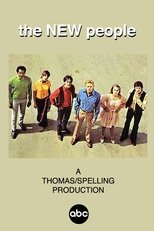
Title: The New People
Released: September 22, 1969
Type: TV
The New People is a short-lived 1969 American television series on ABC that focused on a group of young college students who were returning from a trip in Southeast Asia when their plane crashed on an island in the south Pacific Ocean. The crash killed several of the college students, and all but one of the adults, who was badly injured and later died. The surviving students were the only human life remaining on the island. The island was unusual in that it had been built up as a site for a potential above-ground nuclear test which never took place, leaving all of the buildings and supplies untouched and ready for use by the survivors.

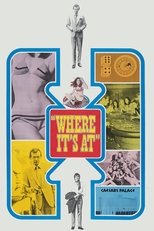
Title: Where It's At
Character: Andy 'A.C. Jr.' Smith
Released: May 7, 1969
Type: Movie
A "Sixties Generation" comedy about an offbeat father-son relationship. Dad runs a Las Vegas hotel-casino and his son is a college student with a different set of moral and ethical standards. When they meet in Vegas, they immediately clash in their efforts to understand one another.


Title: The Illustrated Man
Character: Willie
Released: March 26, 1969
Type: Movie
A man who has a body almost completely covered in tattoos is searching for the woman who cursed him with the "skin illustrations". Each tattoo reveals a bizarre story, which is experienced by staring at the scene depicted. When the illustrated man meets a fellow tramp on the road a strange voyage begins.


Title: Tattooed Steiger
Character: Himself
Released: January 1, 1969
Type: Movie
A behind-the-scenes look on the making of the movie "The Illustrated Man" featuring scenes from the movie and the design and application process of tattooing lead actor Rod Steiger by make-up artists.

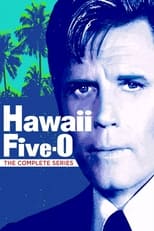
Title: Hawaii Five-O
Character: Chris Vashon
Released: September 20, 1968
Type: TV
Hawaii Five-O is an American police procedural drama series produced by CBS Productions and Leonard Freeman. Set in Hawaii, the show originally aired for 12 seasons from 1968 to 1980, and continues in reruns. Jack Lord portrayed Detective Lieutenant Steve McGarrett, the head of a special state police task force which was based on an actual unit that existed under martial law in the 1940s. The theme music composed by Morton Stevens became especially popular. Many episodes would end with McGarrett instructing his subordinate to "Book 'em, Danno!", sometimes specifying a charge such as "murder one".

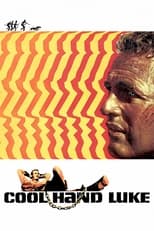
Title: Cool Hand Luke
Character: Loudmouth Steve
Released: November 1, 1967
Type: Movie
When petty criminal Luke Jackson is sentenced to two years in a Florida prison farm, he doesn't play by the rules of either the sadistic warden or the yard's resident heavy, Dragline, who ends up admiring the new guy's unbreakable will. Luke's bravado, even in the face of repeated stints in the prison's dreaded solitary confinement cell, "the box," make him a rebel hero to his fellow convicts and a thorn in the side of the prison officers.

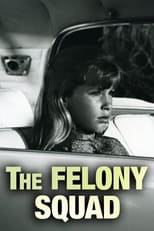
Title: Felony Squad
Released: September 12, 1966
Type: TV
Twenty-year veteran Detective Sergeant Sam Stone is paired with rookie Briggs in a large Western metropolis.


Title: The F.B.I.
Character: Frank Moonan
Released: September 19, 1965
Type: TV
The F.B.I. is an American television series that was broadcast on ABC from 1965 to 1974. It was sponsored by the Ford Motor Company, and the characters almost always drove Ford vehicles in the series. Alcoa was co-sponsor of Season One only.


Title: The F.B.I.
Character: Paul Clementi
Released: September 19, 1965
Type: TV
The F.B.I. is an American television series that was broadcast on ABC from 1965 to 1974. It was sponsored by the Ford Motor Company, and the characters almost always drove Ford vehicles in the series. Alcoa was co-sponsor of Season One only.


Title: The F.B.I.
Character: Dree Foster
Released: September 19, 1965
Type: TV
The F.B.I. is an American television series that was broadcast on ABC from 1965 to 1974. It was sponsored by the Ford Motor Company, and the characters almost always drove Ford vehicles in the series. Alcoa was co-sponsor of Season One only.


Title: The F.B.I.
Character: Casey Morton Jr.
Released: September 19, 1965
Type: TV
The F.B.I. is an American television series that was broadcast on ABC from 1965 to 1974. It was sponsored by the Ford Motor Company, and the characters almost always drove Ford vehicles in the series. Alcoa was co-sponsor of Season One only.


Title: The F.B.I.
Character: Dale Hillman
Released: September 19, 1965
Type: TV
The F.B.I. is an American television series that was broadcast on ABC from 1965 to 1974. It was sponsored by the Ford Motor Company, and the characters almost always drove Ford vehicles in the series. Alcoa was co-sponsor of Season One only.


Title: The F.B.I.
Character: Patrick Dano
Released: September 19, 1965
Type: TV
The F.B.I. is an American television series that was broadcast on ABC from 1965 to 1974. It was sponsored by the Ford Motor Company, and the characters almost always drove Ford vehicles in the series. Alcoa was co-sponsor of Season One only.

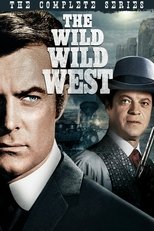
Title: The Wild Wild West
Released: September 17, 1965
Type: TV
The Wild Wild West is an American television series. Developed at a time when the television western was losing ground to the spy genre, this show was conceived by its creator, Michael Garrison, as "James Bond on horseback." Set during the administration of President Ulysses Grant, the series followed Secret Service agents James West and Artemus Gordon as they solved crimes, protected the President, and foiled the plans of megalomaniacal villains to take over all or part of the United States.
The show also featured a number of fantasy elements, such as the technologically advanced devices used by the agents and their adversaries. The combination of the Victorian era time-frame and the use of Verne-esque style technology have inspired some to give the show credit for the origins of the steam punk subculture.


Title: Run for Your Life
Character: Bret
Released: September 13, 1965
Type: TV
Run for Your Life is an American television drama series starring Ben Gazzara as a man with only a short time to live. It ran on NBC from 1965 to 1968. The series was created by Roy Huggins, who had previously explored the "man on the move" concept with The Fugitive.


Title: The Fugitive
Character: Roger Roland
Released: September 17, 1963
Type: TV
Richard Kimble is falsely convicted of his wife's murder and given the death penalty. En route to death row, Kimble's train derails and crashes, allowing him to escape and begin a cross-country search for the real killer, a "one-armed man". At the same time, Dr. Kimble is hounded by the authorities, most notably dogged by Police Lieutenant Philip Gerard.


Title: The Fugitive
Character: Lee Gould
Released: September 17, 1963
Type: TV
Richard Kimble is falsely convicted of his wife's murder and given the death penalty. En route to death row, Kimble's train derails and crashes, allowing him to escape and begin a cross-country search for the real killer, a "one-armed man". At the same time, Dr. Kimble is hounded by the authorities, most notably dogged by Police Lieutenant Philip Gerard.


Title: Route 66
Released: October 7, 1960
Type: TV
Route 66 is an American TV series in which two young men traveled across America in a Chevrolet Corvette sports car. The show ran weekly on Fridays on CBS from October 7, 1960 to March 20, 1964. It starred Martin Milner as Tod Stiles and, for the first two and a half seasons, George Maharis as Buz Murdock. Maharis was ill for much of the third season, during which time Tod was shown traveling on his own. Tod met Lincoln Case, played by Glenn Corbett, late in the third season, and traveled with him until the end of the fourth and final season.
Among the series more notable aspects were the featured Corvette convertible, and the program's instrumental theme song, which became a major pop hit.

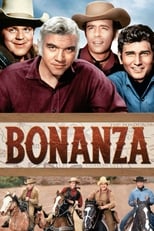
Title: Bonanza
Character: Tracy Blaine
Released: September 12, 1959
Type: TV
The High-Sierra adventures of Ben Cartwright and his sons as they run and defend their ranch while helping the surrounding community.


Title: Young Doctor Malone
Released: December 29, 1958
Type: TV
Young Doctor Malone is an American soap opera, created by Irna Phillips, which had a long run on radio and television from 1939 to 1963. The producer was Betty Corday, who also produced Pepper Young's Family and later was a co-creator with husband Ted Corday of NBC Daytime's Days of our Lives.
Sponsored by General Foods and Post Cereals, the radio serial began on the Blue Network on November 20, 1939. The 15-minute program aired daily at 11:15am, continuing until April 26, 1940. Without a break, it moved to CBS on April 29, 1940, where it was heard for two decades, first airing at 2:00pm weekdays and then 1:30pm. In 1945, Procter & Gamble assumed sponsorship of the program.
